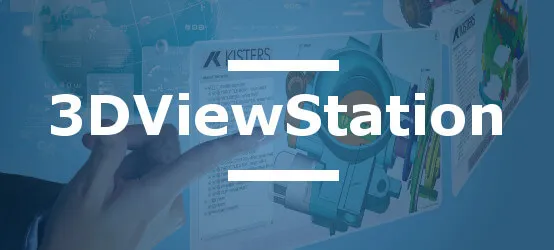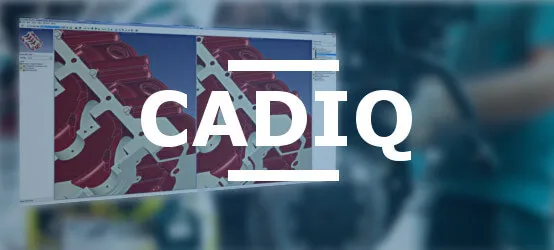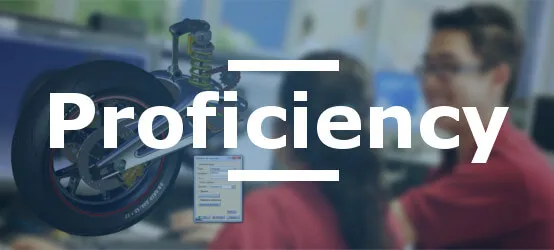Migration to a Model-Based Definition (MBD) environment represents a decisive turning point for manufacturing industries today. Faced with accelerated digitalization of design and manufacturing processes, the ability to maintain complete digital continuity has become a critical factor for competitiveness.
Traditional approaches based on 2D drawings are reaching their limits in a world where product complexity and accelerating development cycles demand perfect fluidity in the flow of technical information. The transition to MBD is becoming a strategic necessity for companies wishing to preserve their competitive advantage.
Table des matières
- Enjeux et défis de la migration vers un environnement MBD
- Approches méthodologiques pour une migration MBD réussie
- DrawtoPMI : Solution avancée pour la migration vers le 3D Master
- Processus d'implémentation MBD et remasterisation
- Études de cas et retours d'expérience
- Mesure des bénéfices et ROI
Challenges and Issues in Migrating to an MBD Environment
The transition from a 2D drawing-based environment to a Model-Based Definition (MBD) approach constitutes a fundamental transformation in how industrial companies create, manage, and communicate their technical data. This strategic evolution comes with numerous challenges that must be identified and anticipated to ensure a successful migration.
Technical Complexity of the 2D-3D Transformation
Migration to an MBD environment is not simply about digitizing drawings. It involves a complete overhaul of how technical information is structured, enriched, and shared. Technical difficulties include:
- Precise conversion of 2D dimensions and tolerances into 3D annotations (PMI)
- Preservation of references and design intent
- Management of existing documentary heritage, sometimes considerable
- Correct interpretation of specific symbols and annotations
These technical challenges are amplified in multi-CAD contexts where the diversity of formats and modeling approaches adds an additional layer of complexity.
Organizational and Human Impact
Beyond purely technical aspects, MBD migration profoundly transforms processes and work habits. This organizational dimension manifests at several levels:
| Dimension | Impacts | Associated Challenges |
|---|---|---|
| Processes | Revision of validation and approval workflows | Redefinition of responsibilities and milestones |
| Skills | New expertise required | Training and supporting teams |
| Collaboration | Modification of interfaces between departments | Adaptation of exchange processes |
| Partners | New exchange formats with the ecosystem | Harmonization of practices with suppliers |
This transformation requires a rigorous change management strategy to support teams and minimize resistance inherent to any major change.
Strategic Issues of Digital Continuity
MBD migration is part of a broader vision of digital continuity, the backbone of Industry 4.0. The associated strategic issues are multiple:
- Preservation of intellectual capital and know-how embedded in product definitions
- Acceleration of development cycles by eliminating digital breaks
- Quality improvement through reduction of interpretation errors
- Strengthening collaboration between different links in the value chain
- Increased innovation capacity through facilitated reuse of existing designs
Methodological Approaches for Successful MBD Migration
Given the inherent complexity of any MBD migration project, adopting a structured methodology is a key success factor. Experience shows that a progressive approach, combining global strategy and targeted tactics, offers the best guarantees of success.
Preparation and Preliminary Assessment
The preparatory phase of an MBD migration project is decisive. It allows establishing a clear vision of the existing situation, objectives, and constraints specific to the organization. Key actions in this stage include:
- Audit of existing 2D documentation (volume, complexity, criticality)
- Assessment of the organization's maturity regarding MBD practices
- Identification of priority use cases and impacted processes
- Definition of measurable objectives and a realistic migration scope
- Development of a migration strategy adapted to the specific context
This assessment phase allows proper sizing of the required effort and identification of potential risks before engaging in the actual migration.
Conversion Strategies and Scenarios
The diversity of industrial contexts and documentary heritage requires fine-tuning of migration strategies. Several approaches can be considered:
| Strategy | Description | Application Context |
|---|---|---|
| Complete Migration | Systematic conversion of the entire 2D heritage to MBD | Organizations of limited size or with high technical added value |
| Selective Migration | Targeted conversion of critical or high-value models | Large groups with voluminous documentary heritage |
| Progressive Migration | Approach by successive waves, prioritizing certain product families | Organizations wishing to spread the effort and minimize risks |
| Hybrid Migration | Temporary maintenance of a dual system (2D and MBD) with targeted migration | Environments constrained by strict regulatory requirements |
The choice of a strategy must be based on an in-depth analysis of business needs, technical constraints, and available resources.
Validation and Quality Control
The reliability of data from MBD migration is a critical issue. A rigorous process of validation and quality control must be implemented to ensure the integrity and compliance of converted models:
- Systematic verification of geometry and 3D annotations
- Control of the completeness of transferred information
- Validation of compliance with applicable MBD standards
- Testing of usage in downstream processes (manufacturing, control, etc.)
- Implementation of measurable quality indicators
This validation process must be formalized and documented to ensure the traceability of operations and facilitate subsequent audits.
DrawtoPMI: Advanced Solution for Migration to 3D Master
In the ecosystem of migration solutions to an MBD environment, DrawtoPMI distinguishes itself by its unique ability to efficiently transform traditional 2D drawings into annotated 3D models. This specialized solution precisely addresses the technical and methodological challenges of transitioning to 3D Master.
Distinctive Features of DrawtoPMI
DrawtoPMI offers an integrated approach to 2D to 3D migration, based on advanced algorithms and a deep understanding of industry standards. Its main features include:
- Automated conversion of 2D annotations to 3D PMI compliant with standards
- Preservation of associative links between geometry and annotations
- Intelligent interpretation of symbols and technical notes
- Optimized positioning of 3D annotations for maximum readability
- Support for multiple views and complex configurations
- Systematic validation of the integrity of converted data
This unique combination of technical capabilities significantly accelerates the migration process while ensuring optimal quality of the produced models.
Architecture and Technical Integration
The architecture of DrawtoPMI has been designed to integrate harmoniously into existing technical ecosystems, thus minimizing operational disruptions during migration:
The solution revolves around complementary modules that ensure comprehensive coverage of the migration process:
- 2D drawing analysis module for intelligent extraction of annotations
- Geometric transformation engine ensuring dimensional accuracy
- 3D model enrichment system with relevant PMI
- Integrated validation and quality control tools
- Interfaces with the main PDM/PLM systems on the market
This modular architecture allows fine adaptation to the specific needs of each organization, while ensuring optimal performance in complex environments.
Standards and Compliance
In a field where compliance with standards is a major issue, DrawtoPMI distinguishes itself by its rigorous alignment with the main industry standards:
| Standard | Coverage | Benefits |
|---|---|---|
| ASME Y14.41 | Complete | Compliance with 3D product documentation requirements |
| ISO 16792 | Complete | International compatibility of technical annotations |
| MIL-STD-31000B | Extended | Eligibility for defense and aerospace projects |
| VDA 4955 | Standard | Compatibility with automotive sector requirements |
This compliance with standards guarantees not only the technical quality of the produced models but also their acceptability in the most demanding supply chains.
MBD Implementation Process and Remastering
The effective implementation of an MBD strategy goes well beyond simply setting up technical tools. It requires a holistic approach integrating technical, organizational, and methodological aspects.
Optimized Workflow for MBD Migration
Establishing a structured workflow is a key success factor for any MBD migration project. This process must be both rigorous and adaptable to the specifics of each organization:
- Preparation and analysis: Evaluation of source drawings, identification of special cases, resource planning
- Automated conversion: Batch processing of 2D drawings with DrawtoPMI, generation of annotated 3D models
- Technical validation: Systematic quality control, comparison with 2D sources, compliance verification
- Targeted remastering: Manual intervention on complex cases or elements not automatically converted
- Final validation: Technical approval, compliance check with standards, business validation
- PDM/PLM integration: Registration in management systems, creation of associated metadata, establishment of links
This workflow must be adapted to the specifics of the organization, taking into account operational constraints and team maturity levels.
Remastering and Completion Tools
Despite significant advances in automatic conversion technologies, some complex situations still require manual intervention. Specialized tools facilitate this remastering:
- Annotation assistants guiding the creation of complex PMI
- 2D/3D visual comparison systems for validation
- Tools for detecting inconsistencies and anomalies
- Libraries of pre-configured standard elements
- Automation mechanisms for repetitive tasks
These remastering tools optimize human intervention by focusing it on high value-added aspects requiring expertise and judgment.
Integration into the PLM/PDM Ecosystem
Migration to an MBD environment cannot be considered in isolation from product lifecycle management systems. Seamless integration with the existing PLM/PDM ecosystem is essential:
This integration must cover several dimensions:
- Management of metadata and attributes specific to MBD models
- Implementation of approval workflows adapted to new formats
- Revision management and configuration of annotated 3D models
- Traceability of conversion and validation operations
- Visualization mechanisms adapted to annotated 3D models
This integration ensures the global coherence of the technical information system and maximizes the benefits of MBD migration.
Case Studies and Experience Feedback
The analysis of concrete MBD migration experiences allows drawing valuable lessons and identifying key success factors. This feedback constitutes a source of inspiration and learning for organizations engaged in a similar approach.
Magneti Marelli Case: Multi-CAD Migration to an MBD Environment
Magneti Marelli, a first-tier automotive supplier, implemented an MBD migration strategy in a particularly complex multi-CAD context. The challenges were multiple:
- Collaboration with multiple suppliers using different CAD systems
- Need to maintain perfect continuity in technical data
- Particularly strict quality and compliance constraints
- Large volume of technical drawings to convert
The implementation of DrawtoPMI achieved remarkable results:
| Model Type | Success Rate | Observed Benefits |
|---|---|---|
| Simple models | 99% geometric, 100% annotations | Almost automatic conversion, minimal intervention |
| Intermediate models | 98% geometric, 98% annotations | Remastering limited to a few specific elements |
| Complex models | 100% geometric, 85% annotations | Full preservation of geometry, targeted completion of PMI |
This experience demonstrates the ability of DrawtoPMI to effectively handle complex industrial cases, even in demanding multi-CAD environments.
Identified Best Practices
Analysis of feedback allows identification of a set of best practices that significantly contribute to the success of MBD migration projects:
- Methodical preparation: Invest sufficiently in the preliminary analysis and planning phase
- Progressive approach: Start with targeted pilot projects before generalizing
- Early user involvement: Associate business teams from the initial phases of the project
- Adapted training: Develop necessary skills upstream of migration
- Clear governance: Precisely define responsibilities and validation processes
- Internal standards: Establish clear rules for creating and using MBD models
- Continuous measurement: Set up performance indicators to monitor migration
These good practices constitute a solid foundation for maximizing the chances of success for any MBD migration project.
Measuring Benefits and ROI
Objective evaluation of the benefits of an MBD migration is an essential element to justify the investment and maintain the dynamic of transformation. This measurement must rely on relevant indicators, both quantitative and qualitative.
Quantifiable Gains
A well-conducted MBD migration generates measurable benefits that directly translate into the company's performance indicators:
- Reduced timeframes: 30 to 50% reduction in time needed to create and modify product definitions
- Productivity gains: 25% increase in engineering team efficiency
- Error reduction: 60 to 80% decrease in non-conformities related to interpretation errors
- Cycle acceleration: 15 to 30% reduction in development cycle duration
- Resource optimization: Reallocation of 20 to 30% of resources to higher value-added tasks
These quantifiable gains form the basis for a rigorous evaluation of the return on investment of an MBD migration project.
Qualitative Benefits
Beyond numerical metrics, MBD migration also generates significant qualitative benefits that contribute to the overall performance of the organization:
| Domain | Observed Benefits | Organizational Impact |
|---|---|---|
| Product quality | Improved accuracy of technical definitions | Reduction of rework and late modifications |
| Collaboration | Clearer and unambiguous technical communication | Smoother exchanges between departments and partners |
| Compliance | Enhanced traceability of definitions and modifications | Simplification of audit and certification processes |
| Innovation | Facilitated reuse of existing designs | Acceleration of innovation cycles |
| Agility | Increased capacity to manage modifications | Enhanced adaptability to market evolutions |
These benefits, although more difficult to quantify precisely, often constitute the most durable competitive advantages resulting from an MBD migration.
ROI Evaluation Methods
Evaluating the return on investment of an MBD migration project requires a methodical approach taking into account all costs and benefits:
- Cost identification: Software solutions, support services, training, internal time
- Benefits inventory: Productivity gains, error reduction, cycle acceleration
- Financial modeling: Calculation of net present value and return on investment period
- Sensitivity analysis: Evaluation of the impact of variations in key parameters
- Continuous monitoring: Regular measurement of performance indicators to validate assumptions
This structured approach allows objective demonstration of the value created by MBD migration and justification of associated investments.
Conclusion
Migration to an MBD environment represents an essential strategic evolution for industrial companies wishing to maintain their competitiveness in a context of accelerated digital transformation. This transition, although complex, offers considerable benefits when conducted with method and rigor.
The use of specialized solutions such as DrawtoPMI significantly accelerates this migration process while ensuring the preservation of technical data integrity. Experience feedback demonstrates that a progressive approach, combined with powerful tools, achieves remarkable conversion rates even in the most complex environments.
The key to success lies in a holistic vision integrating technical, organizational, and methodological aspects. Organizations that successfully implement this global vision will be best positioned to fully benefit from MBD migration and ensure true digital continuity, the foundation of the industry of the future.




